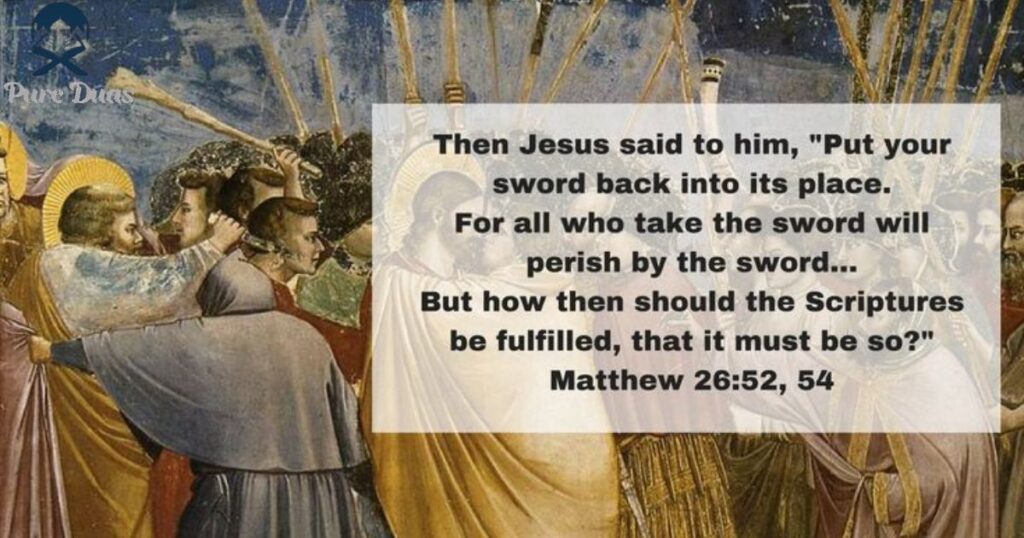Peter stands as one of Christianity’s most fascinating figures. His story weaves through the New Testament like a thread of hope and redemption. From a simple fisherman to a foundational apostle, Peter’s transformation inspires believers across generations. You will discover a man who stumbled, denied, and doubted, yet became the rock upon which Christ built His church. His journey was not polished or perfect. It was raw, real, and remarkably human.
Through Peter’s life, we see ourselves: flawed yet chosen, weak yet empowered. These interesting facts about Peter from the Bible reveal not just historical details but timeless lessons about faith, courage, and divine purpose. Whether you are studying Scripture or seeking encouragement, Peter’s remarkable journey offers profound insights into what it means to follow Jesus wholeheartedly, even when the path gets rocky.
Peter’s Original Name Was Simon
Jesus did not meet a man named Peter, He encountered Simon, son of Jonah. This Galilean fisherman lived an ordinary life until an extraordinary encounter changed everything. When Andrew brought his brother to Jesus, the Lord looked at him and declared a new identity: “You are Simon son of John. You will be called Cephas” (John 1:42).
The Meaning Behind the Name Change
Cephas translates to “rock” in Aramaic. The Greek equivalent? Petros, Peter.
Names carried prophetic weight in biblical times. They were not just labels but declarations of destiny. Jesus saw beyond Simon’s impulsive nature to the solid foundation he’d become. This was not flattery, it was destiny speaking.
The transformation from Simon to Peter mirrors every believer’s journey. We come to Christ as one person and emerge as another. Our old identity gives way to our new calling. Peter would indeed become the rock, not through his own strength, but through Christ’s power working within his weakness.
Why Jesus Changed His Name
Jesus spoke identity into existence before Peter displayed any rock-like qualities.
Peter hadn’t preached a single sermon. He had not healed anyone. He’d simply answered a call to follow. Yet Jesus saw the finished product before the process began. This name change foreshadowed Peter’s role as a leader in the early church. It declared his purpose before he understood it himself.
In ancient Jewish tradition, name changes signified major life transitions. Abram became Abraham. Jacob became Israel. Simon becoming Peter marked his covenant relationship with Christ and his new mission as a fisher of men.
Peter Was a Fisherman

Peter’s hands knew nets before they knew miracles.
He worked the Sea of Galilee alongside his brother Andrew. Fishing was not a hobby, it was survival. These men labored through long nights, hauling heavy nets, mending torn cordage, and selling their catch at dawn. The work demanded strength, patience, and resilience.
Life Before Meeting Jesus
Peter ran a fishing business with partners James and John, sons of Zebedee.
Archaeological evidence suggests Galilean fishermen operated profitable enterprises. Peter owned boats and employed workers. He had responsibilities, obligations, and a comfortable routine. Walking away from all that required radical faith.
Daily life revolved around the water. Peter understood storms, tides, and the unpredictability of the sea. These experiences prepared him for ministry in ways he couldn’t imagine. The patience required to wait for fish translated into patience for souls. The strength to pull nets became strength to build the church.
From Catching Fish to Catching Souls
“Come, follow me, and I will make you fishers of men” (Matthew 4:19).
Jesus transformed Peter’s profession into a metaphor. Everything Peter knew about fishing applied to his new calling. You cast nets widely. You work with others. You persevere through empty nights. You celebrate abundant catches.
Peter would learn to cast the gospel net across nations, gathering people into God’s kingdom. His fishing background was not wasted, it was divine preparation.
The Miraculous Catch That Changed Everything
After fishing all night with nothing to show, Jesus told Peter to cast nets in deep water. Professional fishermen don’t take fishing advice from carpenters. But Peter obeyed. The nets filled so heavily they began tearing. Two boats nearly sank under the weight (Luke 5:1-11).
Peter’s response? He fell at Jesus’ knees and said, “Go away from me, Lord; I am a sinful man!” He recognized divine power and his own unworthiness simultaneously. Yet Jesus didn’t leave. Instead, He called Peter to something greater.
Peter Was One of Jesus’ Closest Disciples

Among the twelve apostles, three formed Jesus’ inner circle: Peter, James, and John. These men witnessed moments others didn’t. They saw behind the curtain of Christ’s humanity into His divinity.
The Inner Circle of Three
They witnessed the Transfiguration, when Jesus’ appearance changed and Moses and Elijah appeared (Matthew 17:1-9). They were called upon for special tasks repeatedly, including accompanying Jesus to pray in Gethsemane during His darkest hour.
This closeness was not favoritism, it was mentorship. Jesus was preparing leaders who’d carry His message forward. Peter would need these intimate encounters to sustain him through future trials. Seeing Christ’s glory on the mountain helped him endure the horror of the cross.
The Great Confession at Caesarea Philippi
When Jesus asked His disciples who people said He was, answers varied. But when He asked, “Who do you say I am?” Peter spoke up with remarkable clarity: “You are the Messiah, the Son of the living God” (Matthew 16:16).
Jesus’ response was equally profound: “Blessed are you, Simon son of Jonah, for this was not revealed to you by flesh and blood, but by my Father in heaven. And I tell you that you are Peter, and on this rock I will build my church, and the gates of Hades will not overcome it.”
This declaration established Peter’s foundational role. The church would be built on the confession Peter made, that Jesus is Christ, God’s Son. Every believer who makes that same confession joins the structure Peter helped establish.
Peter Had a Temper and Acted Impulsively
Bold and brash describes Peter perfectly.
He spoke before thinking. He acted before considering consequences. His emotions ran hot, and his tongue ran faster. Yet this very impulsiveness revealed a passionate heart fully engaged with life and faith.
Bold Actions That Defined His Character
At the Transfiguration, while Jesus spoke with Moses and Elijah, Peter blurted out, “Lord, it’s good for us to be here. If you wish, I’ll put up three shelters” (Mark 9:5-6). Scripture notes he did not know what he was saying. Classic Peter, mouth engaged before brain.
When Jesus tried to wash his feet, Peter refused. “You shall never wash my feet!” But when Jesus explained it was necessary, Peter swung to the opposite extreme: “Then, Lord, not just my feet but my hands and head as well!” (John 13:8-9). All or nothing.
The Sword Incident in Gethsemane
When soldiers came to arrest Jesus, Peter drew his sword and cut off Malchus’s ear, the high priest’s servant (John 18:10). He was ready to fight an entire arrest party single-handedly. His protective love was commendable. His method was misguided.
Jesus immediately rebuked him: “Put your sword away! Shall I not drink the cup the Father has given me?” Then Jesus healed Malchus’s ear, undoing Peter’s violent act. This moment taught Peter that God’s kingdom does not advance through worldly weapons.
Learning to Channel Passion Into Purpose
The same rashness that caused Peter to speak out of turn would later embolden him to preach to thousands. His protective love for Christ, though misdirected in Gethsemane, would later drive him to face persecution fearlessly. The Holy Spirit didn’t eliminate Peter’s personality, He refined it.
Peter Denied Jesus Three Times
Jesus predicted it at the Last Supper: “Before the rooster crows, you will disown me three times” (Matthew 26:34). Peter adamantly protested. “Even if all fall away on account of you, I never will. Even if I have to die with you, I will never disown you!”
His confidence was sincere. His self-awareness was lacking.
The Night of Betrayal
While Jesus faced trial, Peter followed at a distance. He entered the courtyard where he could observe without being noticed, or so he thought. A servant girl recognized him: “You also were with Jesus of Galilee.” Peter’s first denial came quickly: “I don’t know what you are talking about.”
Another servant pressed the accusation. Peter denied it again, this time with an oath. Finally, bystanders confronted him: “Surely you are one of them; your accent gives you away.” Peter’s third denial escalated to cursing and swearing: “I do not know the man!”
Then the rooster crowed.
Bitter Tears and True Repentance
Peter wept bitterly after realizing what he’d done.
The Gospel of Luke adds a devastating detail: “The Lord turned and looked straight at Peter” (Luke 22:61). Imagine that moment. Their eyes met across the courtyard. No words were needed. Peter saw not anger in Jesus’ eyes but compassion, and it broke him.
This was not a casual regret. Peter experienced genuine repentance. The Greek word used suggests deep emotional anguish. Yet this breaking prepared him for restoration. You can not rebuild what has not first been broken.
Jesus’ Restoration by the Sea
After the resurrection, Jesus appeared to disciples by the Sea of Galilee. He prepared breakfast and called Peter aside. Three times he asked, “Simon son of John, do you love me?” Each time Peter affirmed his love, though the repetition pained him. Three denials, three affirmations. Jesus was methodically healing Peter’s wounded soul.
Then came the commission: “Feed my sheep.” Peter was reinstated. His failure was not the end, it was preparation for humble, compassionate leadership. He would pastor others with the tenderness of someone who knew both failure and forgiveness intimately.
Peter Was the First Disciple to Enter Jesus’ Empty Tomb
Mary Magdalene ran to Peter and John with shocking news: “They have taken the Lord out of the tomb!” Both men raced toward the burial site. John, younger and faster, arrived first. But he hesitated at the entrance, peering inside.
Not Peter.
What Peter Saw Inside
Peter was the first to enter (John 20:3-6).
He saw the linen cloths lying there, and the face cloth that had been on Jesus’ head, folded up separately. These were not signs of grave robbery. Thieves wouldn’t carefully arrange burial wrappings. Something unprecedented had happened.
The empty tomb represented more than absence. It proclaimed presence elsewhere. Jesus had not been stolen. He had risen. The folded grave clothes were His signature, proof that death itself had been conquered and neatly put away.
The Dawn of Renewed Faith
Seeing the empty tomb did not immediately bring understanding, that came later. But it sparked hope. The man who denied Jesus three times now witnessed evidence that Christ’s promises were true. Death wasn’t final.
Peter’s characteristic boldness, entering first, served him well here. Sometimes faith requires stepping into the unknown before fully understanding.
Peter Walked on Water (Briefly)
During a storm on the Sea of Galilee, disciples struggled in their boat. On the fourth watch of night, they saw a figure walking on water. Terror seized them until Jesus called out, “Take courage! It is me. Do not be afraid.”
“Lord, If It’s You…”
“Lord, if it’s you, tell me to come to you on the water” (Matthew 14:28). Notice the conditional: “if it’s you.” Peter wanted confirmation through participation. He did not just want to believe, he wanted to experience.
Jesus issued a one-word invitation: “Come.”
Peter stepped out of the boat. His feet found solid support where there should have been none. For glorious moments, he defied natural law through supernatural faith. He actually walked on water, something no other disciple even attempted.
Sinking When Doubt Crept In
Peter noticed the wind. His eyes moved from Jesus to circumstances. Fear displaced faith. Immediately, he began sinking and cried out, “Lord, save me!” Jesus reached out, caught him, and said, “You of little faith, why did you doubt?”
Some criticize Peter for sinking. But he is the only one who got out of the boat. While others played it safe, Peter took the risk. His partial success teaches more than their complete inaction.
What This Miracle Teaches Us
Peter’s water-walking experience illustrates a fundamental truth: faith requires focus. As long as Peter looked at Christ, the impossible became possible. When he focused on obstacles, he sank. Yet even in sinking, he knew where to turn: “Lord, save me!”
This moment prepared Peter for future challenges. Leading the early church would require walking on impossible waters repeatedly.
Peter Played a Key Role at Pentecost
Fifty days after Jesus’ crucifixion, 120 believers gathered in Jerusalem. Suddenly, a sound like rushing wind filled the house. Tongues of fire rested on each person. They began speaking in languages they’d never learned, the Holy Spirit had arrived.
Peter’s Powerful Pentecost Sermon
Peter emerged as a prominent leader that day.
He stood up with the eleven and addressed the crowd gathering outside. This was the same man who’d cowered before a servant girl. Now he boldly proclaimed Christ to thousands. The Holy Spirit empowered him with supernatural courage.
His sermon (Acts 2:14-41) explained the Spirit’s outpouring as prophetic fulfillment. He recounted Jesus’ life, death, and resurrection. Then he issued a call to repentance: “Repent and be baptized, every one of you, in the name of Jesus Christ for the forgiveness of your sins.”
3,000 Converts in One Day
About 3,000 converts were baptized that day. The Christian church exploded into existence. Peter played a key role not just in preaching but in establishing the church’s foundation. His message opened the door of salvation to thousands.
This was not human eloquence, it was divine anointing. The man who’d failed so publicly now succeeded spectacularly. His past denial made his present declaration even more powerful.
Peter Was a Central Figure in the Early Church
The book of Acts chronicles Peter’s leadership repeatedly. He performed miracles, faced persecution, and broke cultural barriers to spread the gospel. His influence shaped Christianity’s early trajectory decisively.
Performing Miracles in Jesus’ Name
At the temple gate called Beautiful, Peter encountered a lame beggar. “Silver or gold I do not have, but what I do have I give you. In the name of Jesus Christ of Nazareth, walk” (Acts 3:1-10). The man leaped up, walking and praising God.
Later, people brought the sick into the streets, hoping Peter’s shadow might fall on them as he passed by, and they were healed (Acts 5:15). In Joppa, Peter raised Tabitha from the dead (Acts 9:36-42). These miracles authenticated his message and demonstrated Christ’s continued presence through His apostles.
Opening the Gospel to Gentiles
God gave Peter a vision of a sheet containing unclean animals, commanding him to “kill and eat.” Peter refused, citing Jewish dietary laws. God’s response? “Do not call anything impure that God has made clean” (Acts 10).
This vision prepared Peter to visit Cornelius, a Roman centurion. When the Holy Spirit fell on Cornelius’s household, Peter realized God’s salvation extended beyond Jews to all people. He baptized these Gentiles, opening Christianity to the world.
Facing Persecution With Courage
Peter was imprisoned multiple times for preaching Christ. Once, an angel miraculously freed him. When religious authorities ordered him to stop preaching, Peter responded, “We must obey God rather than human beings!” (Acts 5:29).
The man who once feared a servant girl now fearlessly confronted powerful authorities. Transformation through the Holy Spirit was complete.
Peter Was Crucified Upside Down

Historical accounts from early church fathers place Peter’s martyrdom in Rome during Emperor Nero’s persecution of Christians, approximately 64-68 AD. When sentenced to crucifixion, Peter made an unusual request: crucify him upside down.
The Ultimate Act of Humility
Peter felt unworthy to die in the same manner as Jesus. The man who’d once declared he’d never deny Christ now declared he did not deserve to die like Him. This was not false humility, it was genuine recognition of Christ’s greatness.
The request was granted. Peter hung inverted on a cross, suffering immensely yet testifying powerfully. His death declared what his life had proven: Jesus was worth everything, including a painful, humiliating execution.
Peter’s Legacy Lives On
He wrote letters (1 Peter and 2 Peter) that continue instructing believers. His story encourages anyone who’s failed, doubted, or stumbled. If Peter could be transformed from an impulsive denier to a foundational apostle, there’s hope for all of us.
Peter’s life proves God does not require perfection, He requires willingness. Bring your flaws, your failures, your fears. Let Christ make you into a rock.
| Peter’s Transformation Journey |
| From: Fisherman To: Fisher of Men |
| From: Impulsive Follower To: Wise Leader |
| From: Denier of Christ To: Defender of Faith |
| From: Fear-Driven To: Spirit-Empowered |
| From: Self-Confident To: Christ-Dependent |
Conclusion: The Enduring Impact of Peter’s Story
Peter’s remarkable journey from Galilean fisherman to church foundation inspires countless believers. His story isn’t about perfection but progression. He stumbled magnificently and rose powerfully. Through every failure, Jesus remained faithful, transforming weakness into strength.
These interesting facts about Peter from the Bible reveal universal truths: God calls ordinary people to extraordinary purposes. He redeems our worst moments. He sees potential we can not imagine. Peter’s impulsiveness became courageous leadership. His denial became a passionate proclamation. His fear became fearless faith.
What does Peter’s story mean for you today? Perhaps you have failed. Maybe you have denied Christ through actions or silence. Peter’s life whispers hope: it is not over. Jesus specialises in resurrection,not just of bodies but of dreams, callings, and destinies. Let Peter’s transformation encourage yours. Step out of the boat. Enter the empty tomb. Preach boldly. Your remarkable journey awaits.
Frequently Asked Questions
What does the name Peter mean in the Bible?
Peter means “rock” in Greek (Petros), translated from Aramaic “Cephas.” Jesus gave Simon this name, prophesying his role as a foundational leader in the church, symbolizing stability and strength.
Was Peter married?
Yes, Peter was married. Scripture references his mother-in-law (Mark 1:30), confirming his marital status. Paul mentions Peter traveled with his wife during ministry (1 Corinthians 9:5), showing family and calling coexisted.
Why did Peter deny Jesus if he loved Him?
Fear overwhelmed Peter’s love temporarily. Under pressure, self-preservation instincts kicked in. His denial teaches that even devoted believers can stumble. Yet Jesus restored him, showing repentance overcomes failure through grace and forgiveness.
Did Peter write any books of the Bible?
Peter authored two New Testament letters: 1 Peter and 2 Peter. First Peter addresses suffering and hope. Second Peter warns against false teachers. Both letters provide pastoral wisdom for believers navigating challenging circumstances faithfully.
What can we learn from Peter’s life?
Peter’s journey teaches that God uses imperfect people. Failure does not disqualify you from service. Transformation happens through a relationship with Christ. Boldness grows through the Holy Spirit. Humility deepens through trials. Anyone can become foundational.
